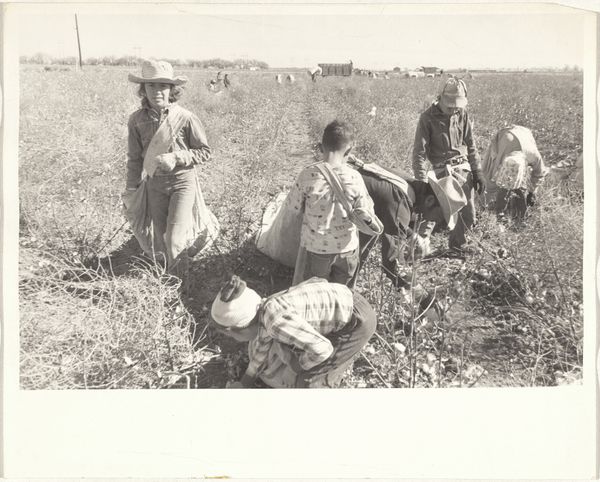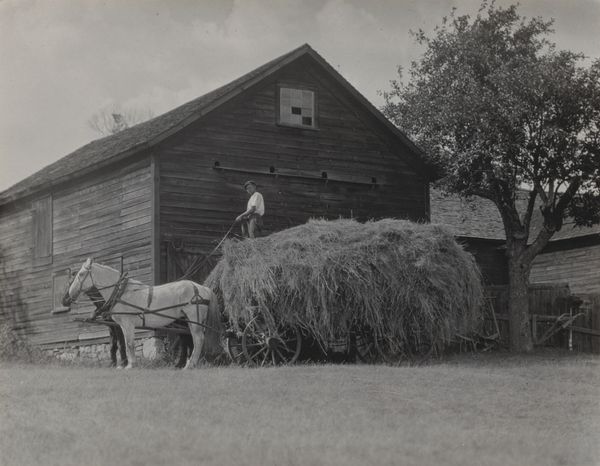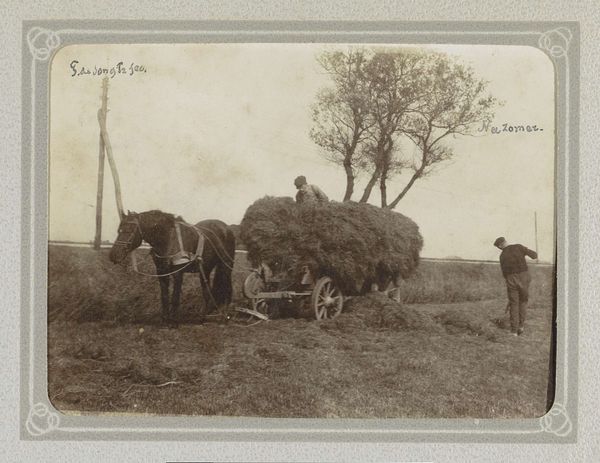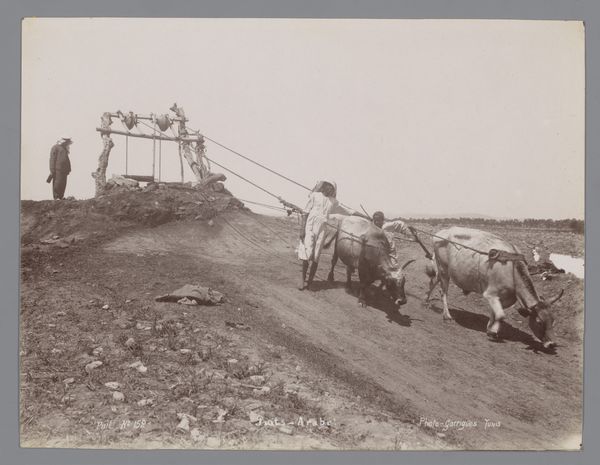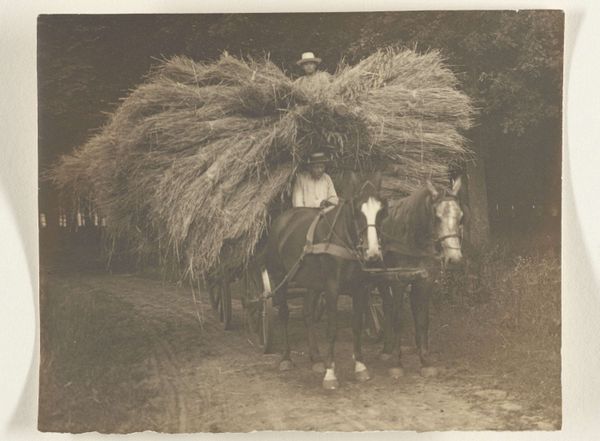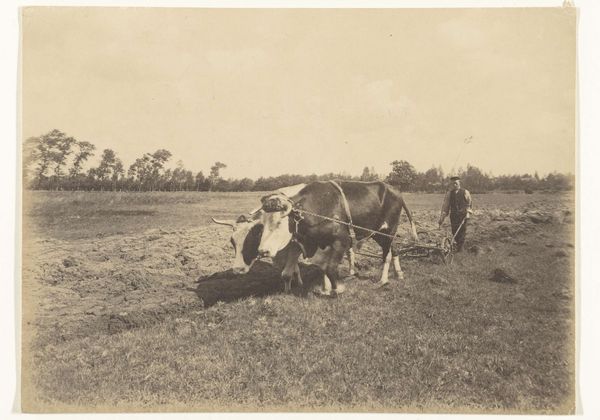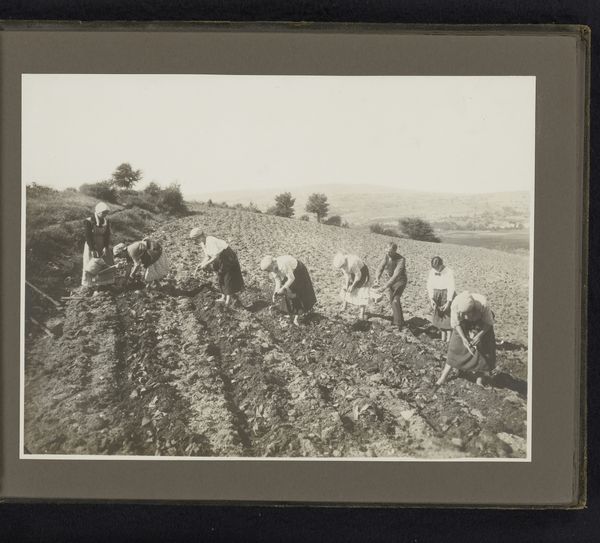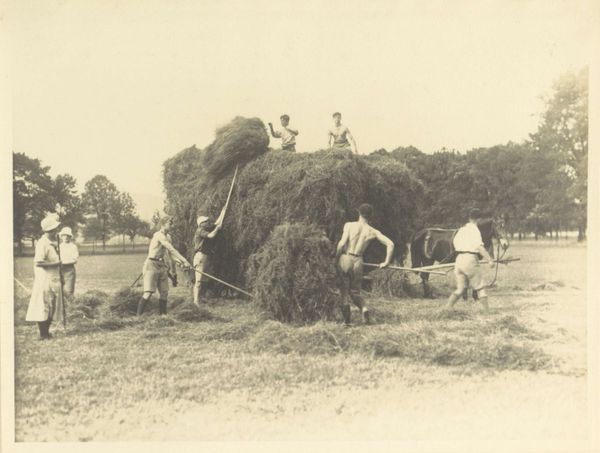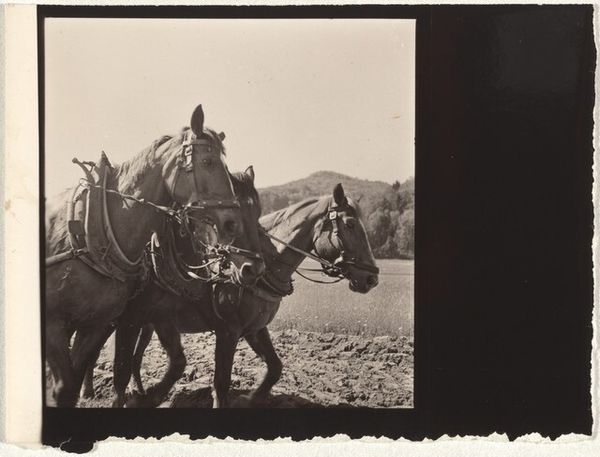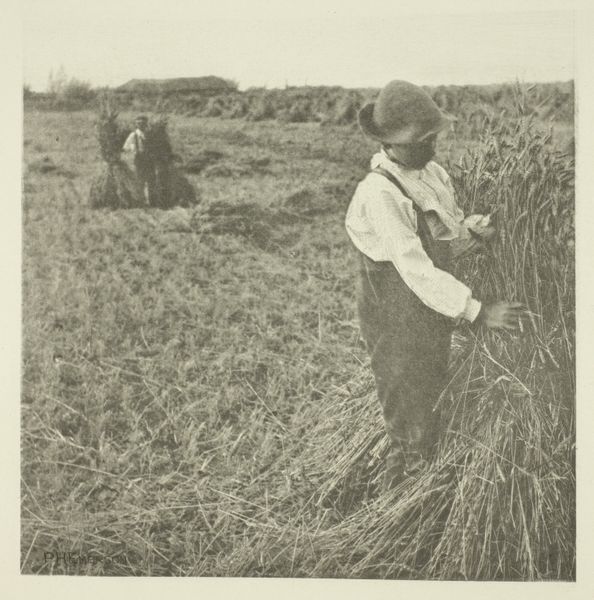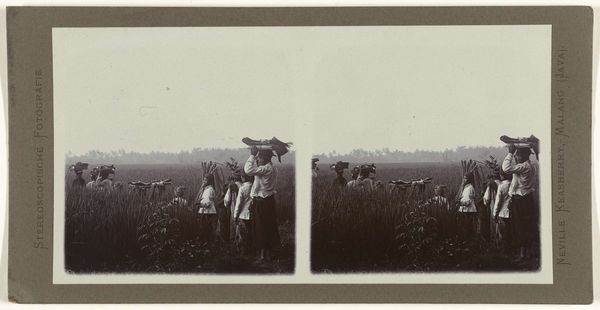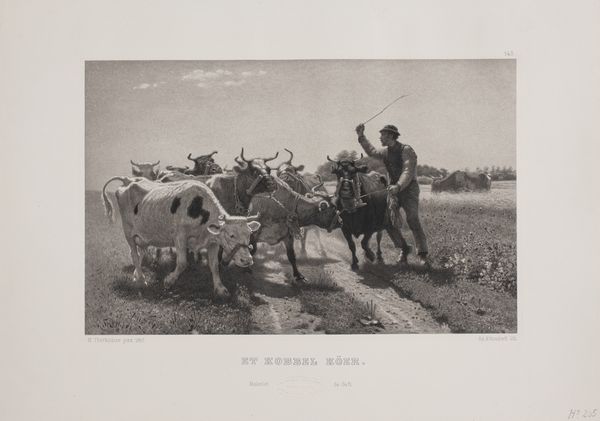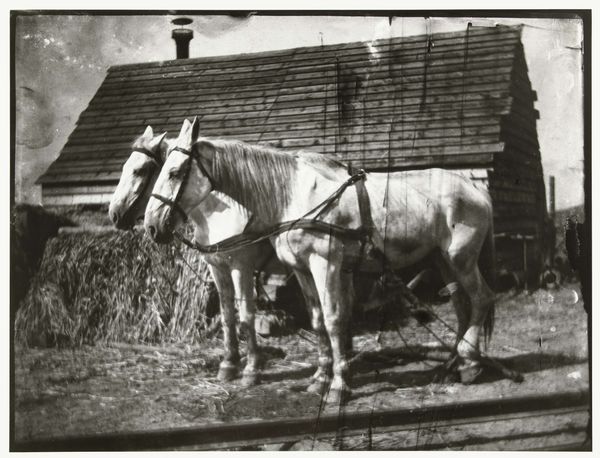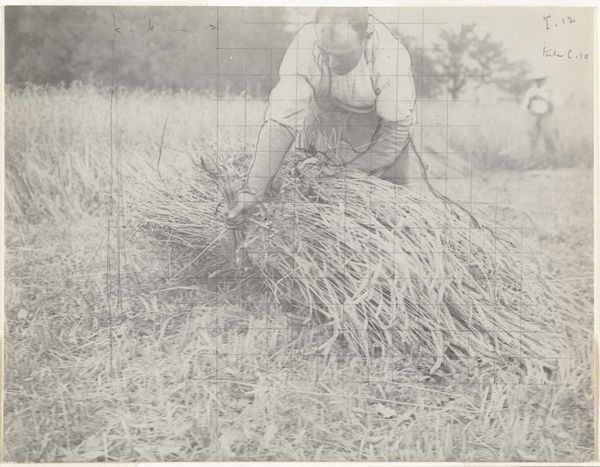
photography, gelatin-silver-print
#
print photography
#
landscape
#
photography
#
gelatin-silver-print
#
genre-painting
#
realism
Dimensions: height 13 cm, width 18 cm
Copyright: Rijks Museum: Open Domain
Curator: This gelatin silver print, attributed to J.H. Hasewinkel and titled "Jeugdstorm helpt met hooien," translates to "Youth Storm Helps with Haying" and it is believed to have been taken sometime between 1943 and 1948. Editor: At first glance, it strikes me as strangely idyllic, even nostalgic. A horse-drawn hay wagon piled high with golden straw, topped by children, against a summer sky... yet the "Youth Storm" title hints at something more complex. Curator: Indeed. The "Jeugdstorm" was a Dutch youth movement modeled after the Hitler Youth. Seeing them presented in what appears to be a celebration of rural labor is... unsettling. It's easy to romanticize such scenes, but this photograph has clear political implications related to forced labor. Editor: Yes, those symbols… the hay itself, almost obscuring everything, feels like a weight – both literal and figurative. The act of harvesting connects us to deep agricultural roots and simpler times, but here, the meaning is twisted, burdened. The figures on the wagon, are they joyous, or are they just performing their assigned roles? Curator: The image is compelling propaganda, certainly, meant to depict this group contributing to the national good during a difficult time. The deliberate construction of a cohesive national identity is hard to ignore, especially during a period defined by scarcity, occupation, and political unrest. It romanticizes collaboration. Editor: The black and white tones amplify the severity of the historical context, don't they? A colour image might try to sweeten this, but the monochrome strips away any softening and forces us to deal directly with the reality. This seemingly bucolic image holds so much cultural anxiety, and that hay takes on a sinister appearance the longer one looks at it. Curator: Ultimately, Hasewinkel’s photograph prompts us to confront uncomfortable questions about the manipulation of imagery and the blurring of lines between idealized rural life and politically charged symbolism. It compels us to re-examine the power of photography and question its supposed objectivity, especially during times of conflict. Editor: Yes, seeing how symbols of innocence and tradition could be exploited leaves a disquieting effect. It serves as a reminder to consider the narratives behind all images and of who controls those narratives and how they will be seen.
Comments
No comments
Be the first to comment and join the conversation on the ultimate creative platform.
